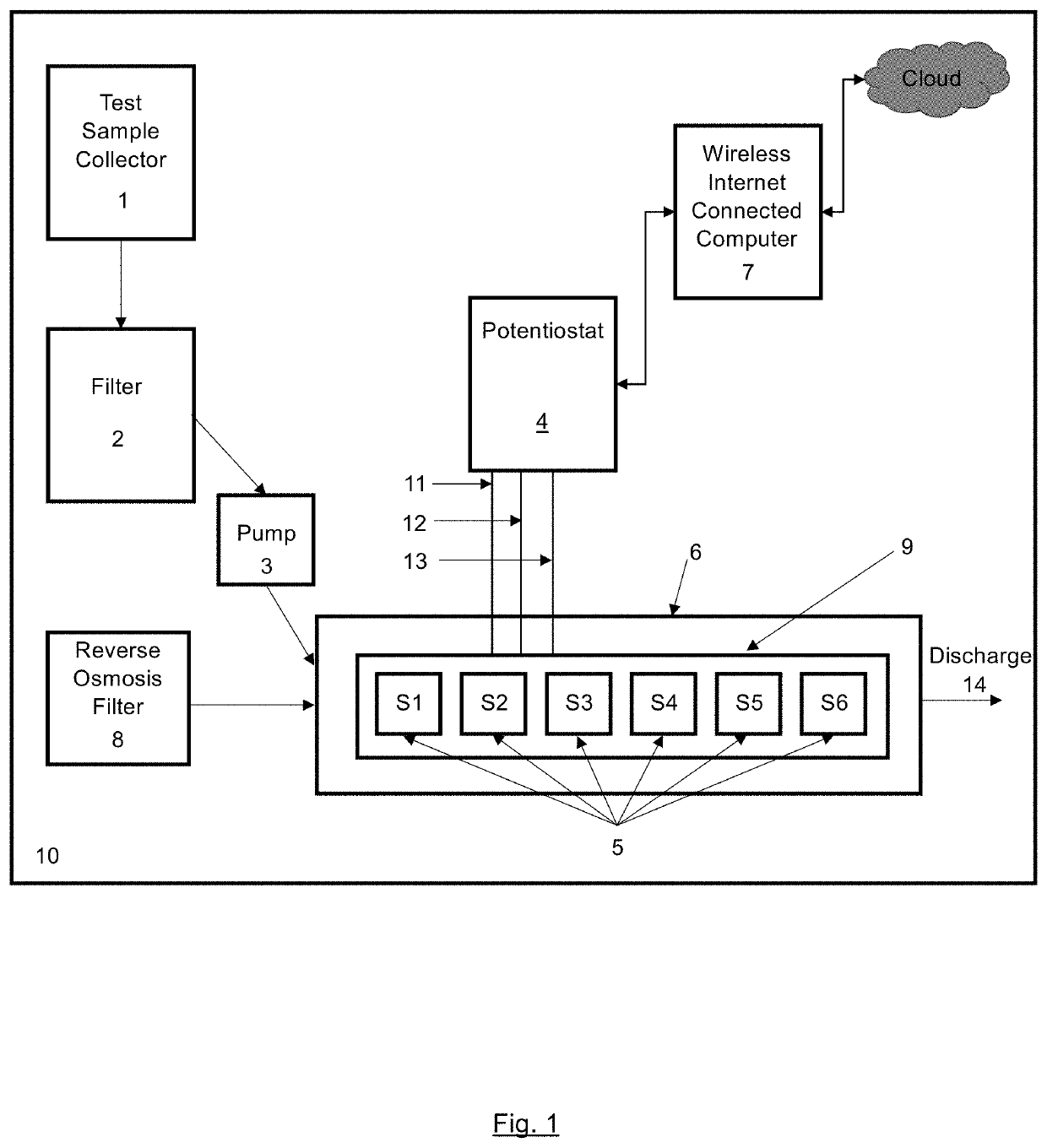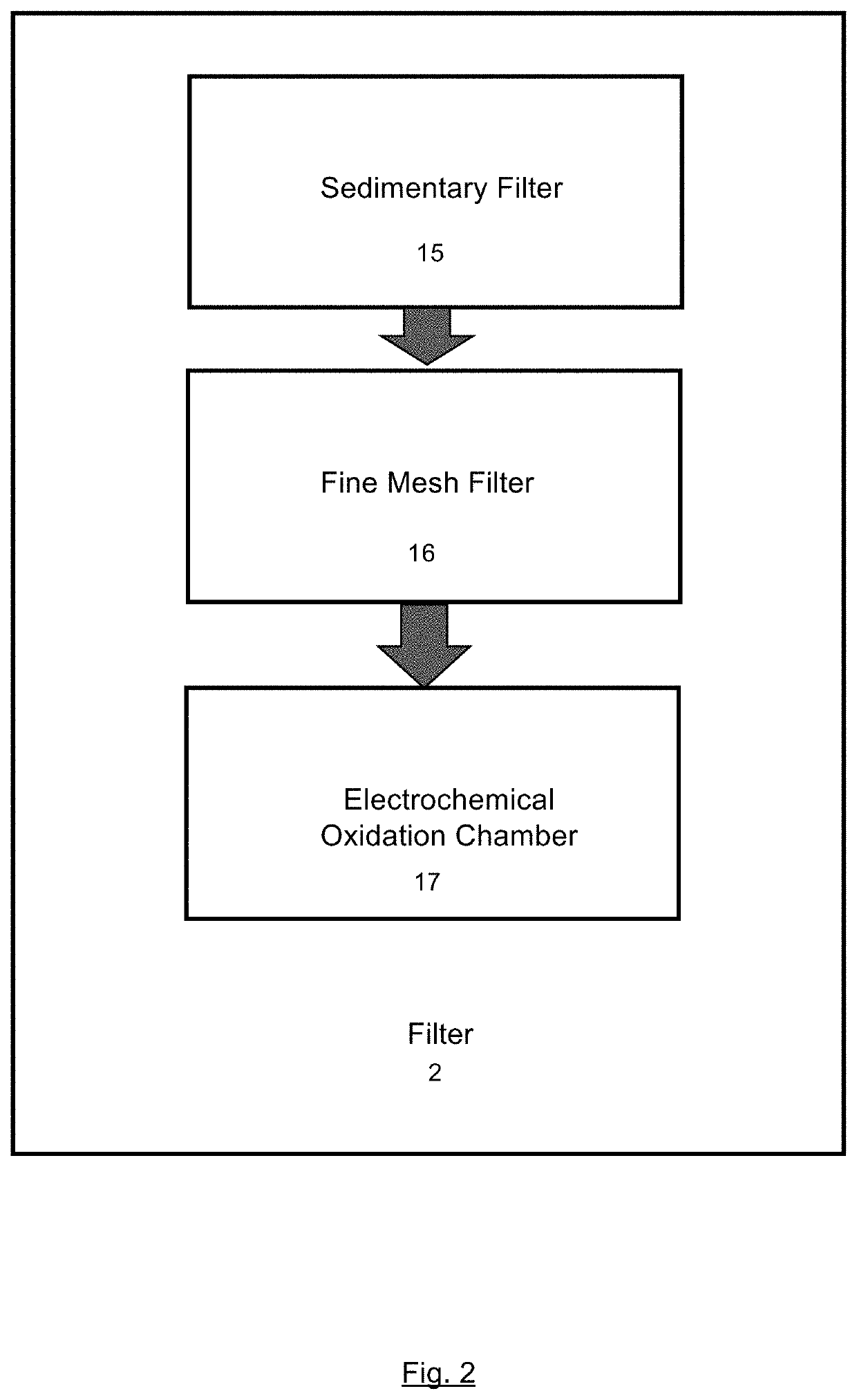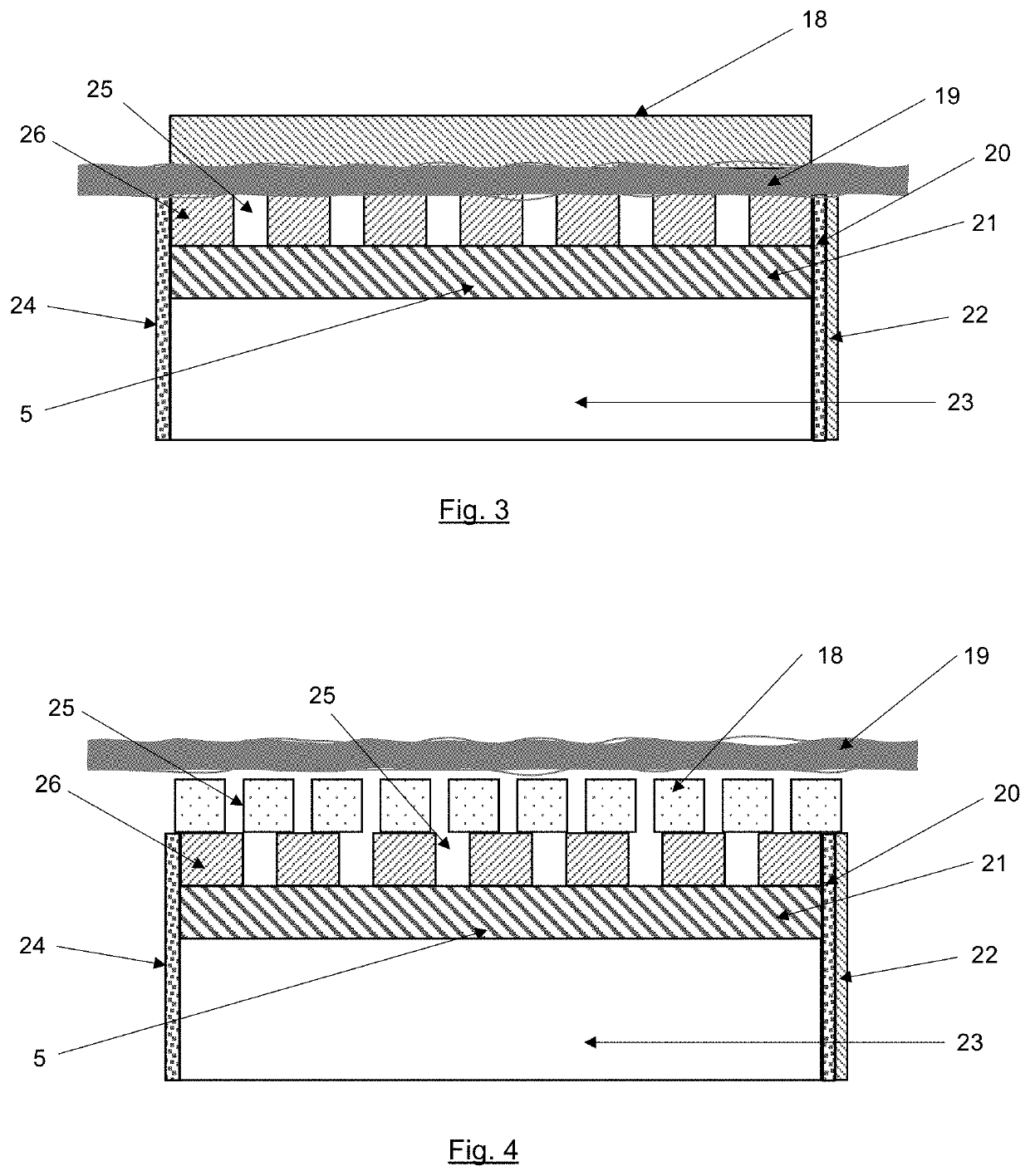Electrochemical Detection without Reagents
a technology of electrochemical detection and reagents, applied in the field of electrochemical analysis, can solve the problems of requiring the use of reagents, affecting the detection accuracy of sensors,
- Summary
- Abstract
- Description
- Claims
- Application Information
AI Technical Summary
Benefits of technology
Problems solved by technology
Method used
Image
Examples
Embodiment Construction
[0025]Nanosensors as described in the current art are vulnerable to contamination, need constant maintenance and as such not suitable to usage in remote, unmanned locations for environmental monitoring. The present invention claims a variety of improvements that allow detection of various analytes in a fluid or a gas (such as the atmosphere) including mercury, lead, cadmium, chromium, hexavalent chromium and other dangerous substances without the use of reagents. Additionally, the present invention includes novel method and apparatus that prevent contamination of the sensors so that these sensors can be left unmanned, without maintenance, in remote locations for testing water or the atmosphere, for long periods of time to transmit detection of dangerous substances to a central location, and act as a nervous system for the planet.
[0026]FIG. 1 shows a block diagram of a preferred embodiment of the apparatus configured to practice the claimed method. Remote sensor 10 is comprised of th...
PUM
 Login to View More
Login to View More Abstract
Description
Claims
Application Information
 Login to View More
Login to View More - R&D
- Intellectual Property
- Life Sciences
- Materials
- Tech Scout
- Unparalleled Data Quality
- Higher Quality Content
- 60% Fewer Hallucinations
Browse by: Latest US Patents, China's latest patents, Technical Efficacy Thesaurus, Application Domain, Technology Topic, Popular Technical Reports.
© 2025 PatSnap. All rights reserved.Legal|Privacy policy|Modern Slavery Act Transparency Statement|Sitemap|About US| Contact US: help@patsnap.com



